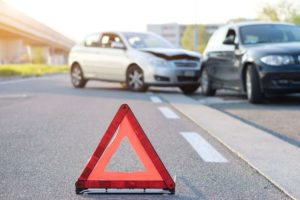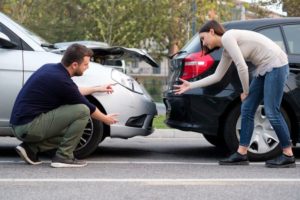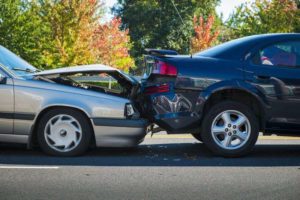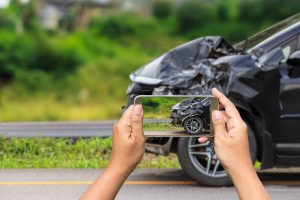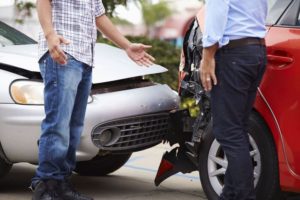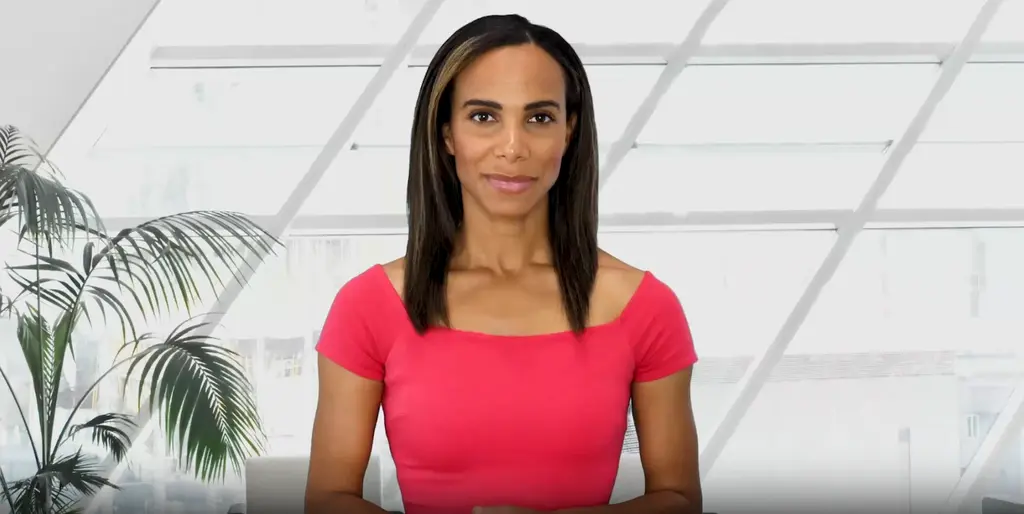Content Reviewed by:
Tucker Clagett •
July.10.2020
Vertified Content
Jul 10, 2020
| Read Time: 9 minutes
If you buy car insurance in Maryland, you will likely purchase something called uninsured motorist coverage.
Attorneys call it UM for short. You may see it abbreviated as “UM/UIM” on your car insurance declarations page.
Almost nobody understands it when they buy it. Maryland state law sort of forces it on you. So, most people have it, pay for it, and don’t really understand it.
This post will explain what uninsured motorist coverage is, how it protects you, and how it will work in your case.
This post is one of our client resources, and you may be reading it because I directed you here to explain how UM coverage works in your case.
This post is a bit longer than most, but stick with it because you have to understand this. Call me if you have any questions.
Please note that this is one of the most technical areas of car accident and personal injury law. In order to explain it, I have to overgeneralize. I will leave out some details. If those details are important in your case, I will explain them to you. (And to find out how insurance works in car accident cases in general, be sure to see our Free Legal Consumer Guide on car accidents.)
Article Contents
What is Uninsured Motorist Coverage?
UM coverage is a type of insurance you likely have in your car insurance policy. Check your insurance policy declarations page (the one that tells you how much coverage you have) and you will see it listed there.
This is technically two types of insurance coverage rolled into one.
- Uninsured coverage provides insurance coverage for you if you are hit by another driver who has NO valid insurance coverage.
- Underinsured coverage provides insurance for you if you are hit by another driver who has some insurance coverage, but not enough to cover your damages.
To keep things simple, I will refer solely to Uninsured Motorist coverage when I write about both types.
When will I need Uninsured Motorist Coverage?
Uninsured coverage comes into play in three instances:
- Your accident is caused by a car with NO valid insurance coverage. This usually happens because some idiot let their insurance lapse, which is a crime.
- Your accident is caused by a “phantom vehicle.” This is a car that flees the scene, or one you cannot identify in order to go after their insurance.
- Your accident is caused by a car with too little insurance coverage to properly cover your damages.
Keep in mind that when you make a claim on your own uninsured motorist coverage, you are limited by the policy limits of your own insurance policy.
Unless you have opted for enhanced uninsured motorist coverage, you will be stuck with your own uninsured motorist limits as the maximum recovery in your case. If you have $100,000 UM coverage, then you are going to get a maximum of $100,000 for your case.
If the other driver’s policy limits are less than your policy limits, you can take the full amount of their policy as a first step. Then you can make a claim on your own insurance for the difference between their policy limits and your own limits.
But the maximum recovery you can get is the value of your policy limits. Your insurance makes up the difference. It doesn’t add your limits on top of their limits – unless you opted for enhanced uninsured motorist coverage.
Examples To Help Explain:
This is complicated and requires examples to explain. (But first, please note Maryland law mandates very specific procedures to follow in order to take both policies. If you screw up the procedures, you will be unable to make a claim on your own UM policy. Do NOT attempt this without an attorney!)
Example A: Uninsured Driver or Phantom Vehicle
Say Joe Blow is driving a car without insurance, and he causes an accident. In that case, you are stuck with your own uninsured motorist limits as the maximum recovery for your case. There is no other insurance company to sue, because Joe Blow stupidly let his insurance lapse.
So, you just pursue your own insurance policy, and you are stuck with your own limits. (Joe Blow, meanwhile, gets a criminal charge because driving without insurance is very, very naughty in the eyes of the State of Maryland.)
This same example applies if an unknown driver cuts you off, causes an accident, and flees the scene. Again, there is no identifiable insurance company to go after.
Example B: Underinsured Motorist
This is where it gets complicated. Say Justin Case rear ends you and causes $75,000 worth of damage. But Justin only has $30,000 insurance coverage (the state required minimum as of this writing).
You, meanwhile have $50,000 in uninsured motorist coverage. You can get a maximum of $30,000 from Joe and his insurance company. But then you can make a claim on your own insurance for the additional $20,000 in damages, to give you a total of $50,000.
You cannot get the full $75,000 in damages because nobody has insurance limits that high.
See how that works? Your insurance coverage makes up the difference between Joe’s coverage and the value of your case, but only to the maximum amount of your policy limits. Unless you get the enhanced UM/UIM coverage, you cannot add the two together. You only get the difference.
In this particular example, you are never going to get a full recovery in your case. Your case is worth $75,000. But you only have $50,000 maximum coverage. There is nowhere to get that additional $25,000 to give you the full value of your recovery.
What happens?
You are going to have to make do with the $50,000 you got. That is all there is. There is no source from which to get additional money. (Technically you can sue Justin Case personally and get the difference from him. But this isn’t practical because if Justin had any money he would likey have better car insurance! We will check on this to be sure, but rarely a good option.)
For what it’s worth, I have always thought this is a bad law. Most people think they can get the full value of their own uninsured motorist limits on top of the adverse driver’s limits. That is what any reasonable person would assume by just reading your declarations page.
But that is not so. Your insurance merely makes up the shortfall to a maximum of your own policy limits.
In 2017 Maryland passed a new law to allow for enhanced uninsured motorist coverage, but you have to opt in to make use of it. Click that link to read our blog post and learn more.
Example C: Your UM Limits = Adverse Driver’s Limits
Say Archibald Northbottom causes an accident and your case is worth $100,000. Archibald has some money (and with that name he better!) and therefore has a decent policy with $100,000 limits. You also have $100,000 limits for uninsured motorist coverage. What happens now?
Assuming you did not opt for enhanced uninsured motorist coverage, you cannot get money from your own insurer.
Your limits are the same as Archibald’s. You cannot add the two policy limits together (unless you opted for enhanced uninsured motorist coverage). You can only get the difference from your own policy, up to your own policy limits.
Since you and Archibald have the same limits, there is nothing to make up for. Archibald’s insurance will pay, and your insurance doesn’t have to pay anything.
What About Enhanced Uninsured Motorist?
This is a new law in Maryland in 2017. If you opt in, you can add your uninsured motorist benefits to the value of the adverse driver’s policy. We lawyers call this “stacking” of insurance policies, and it is usually forbidden.
How much uninsured motorist coverage should I get?
The state forces you to have the same limits for UM/UIM coverage as you do for liability coverage (unless you sign a waiver).
We always recommend everyone get a $250,000 insurance policy if you can afford it (and it is likely cheaper than you think). That would provide you with up to $250,000 in uninsured motorist coverage.
The old standard of $100,000 just doesn’t cut it anymore with the dramatic increase in medical bills.
But whatever you do, do not waive your right to uninsured motorist coverage!
Almost nobody does that. You won’t save much money. If you do that and get hit by an uninsured motorist, you are going to be completely out of luck and completely on your own.
Isn’t it easy to make a claim for my own insurance coverage?
No! It is NOT easy to claim uninsured motorist benefits.
The law is very technical and one slip lets your insurance company completely off the hook. Also, if you litigate, they will be a tougher opponent that the adverse driver’s insurance company.
Wait! My own insurer will fight me?
Yes! And worse yet, your own insurer will usually fight you harder than the adverse driver’s insurer.
In my experience, uninsured motorist claims are generally denied and litigated. My clients often get angry because they feel betrayed by their own insurance company. They make the mistake of thinking that insurer is there to cover them and give them money. Not so!
If you have a uninsured motorist claim in Maryland, get ready to feel betrayed and get ready to fight them. This may not seem fair, but it is just the way it is.
Insurance companies make money by taking in premiums with one hand, and not paying claims with the other. It’s nothing personal. It’s just business. (Mafia reference intended!)
Uninsured motorist insurance tends to make it very hard for their own client to recover. The uninsured motorist statute and case law give them several ways to slip out on a technicality. They will not hesitate to use any of these technicalities on their own insured.
What is the Process?
For a regular uninsured claim, the process does not change. For an underinsured motorist claim, there is a very specific statute we must follow exactly if you want to make this claim. Here it is in a nutshell (but again, don’t try this on your own!):
- We have to receive a formal written offer of policy limits from the adverse driver’s insurance, along with a certification that the limits are what they say they are.
- We have to send a letter to your insurer, by certified mail return receipt (old school!), and give them 60 days to respond from the date they receive the letter.
- At the end of 60 days, your insurance company must either (a) allow us to accept the settlement offer and release the adverse driver from liability, or (b) refuse to allow us to release the driver, and pay us the amount of the offer themselves. If they opt for B, they get to sue the adverse driver personally and get their money back. As you might imagine, they usually go for option A. If the adverse driver had assets they wouldn’t likely be driving with such low insurance limits!
- Either way, at the end of 60 days we will get at lease a partial payment in your case. We will get whatever the amount of the offer is.
Conclusion & Next Steps
Uninsured motorist claims are complicated, require some additional wait time, and will be frustrating. You should never try to handle an uninsured motorist claim on your own.
If you are not one of my clients reading this, go get an attorney before you sign anything or agree to anything. This is simply not a DIY area of law.
I have personally been handling uninsured motorist claims for over 20 years. We know the procedures for making them, and litigating them.
I literally have checklists for these cases to make sure we don’t miss one of the technicalities. I will help you navigate this frustrating process and see your claim through to a satisfactory end.
Want to know more? Discover what you need to know about car accident cases in Maryland. Click here to see our Free Legal Consumer Guide to Maryland car accident cases and get answers to your questions today. Know your options. Be informed. Protect yourself.
Need a Personal Injury lawyer? Please contact us for a consultation today if you need a Maryland personal injury lawyer for your car accident case.
Like our blog? Subscribe to our email newsletter and stay informed!


